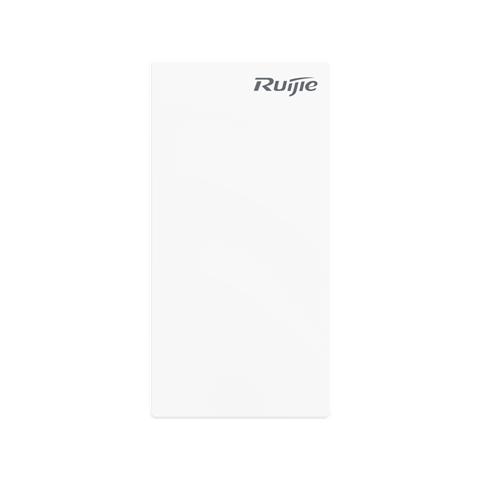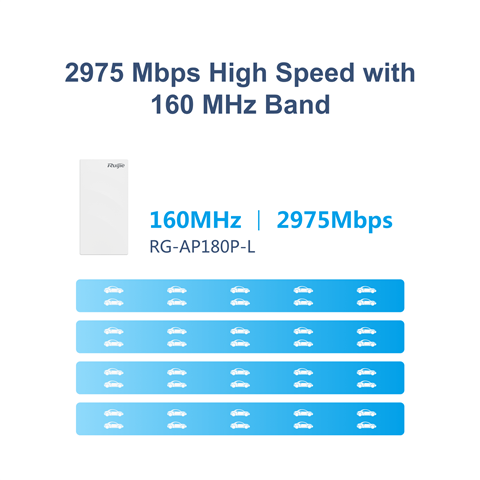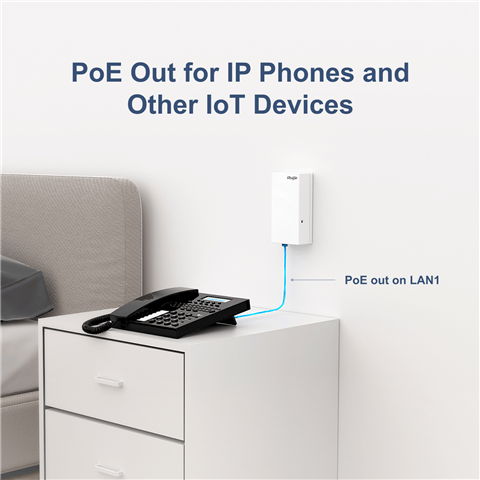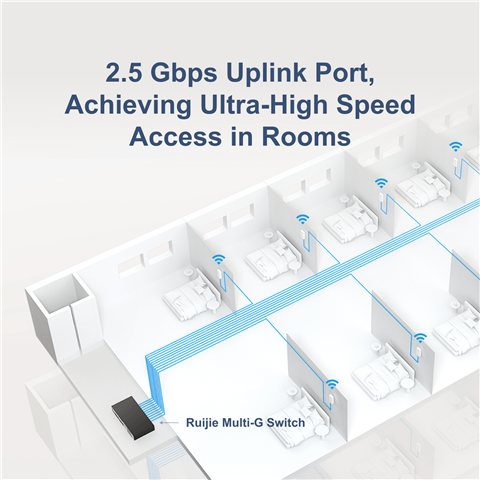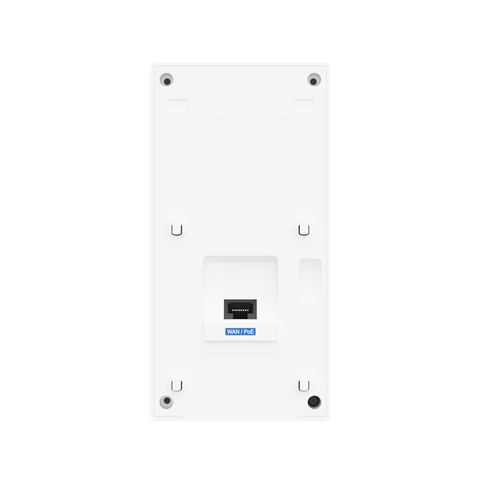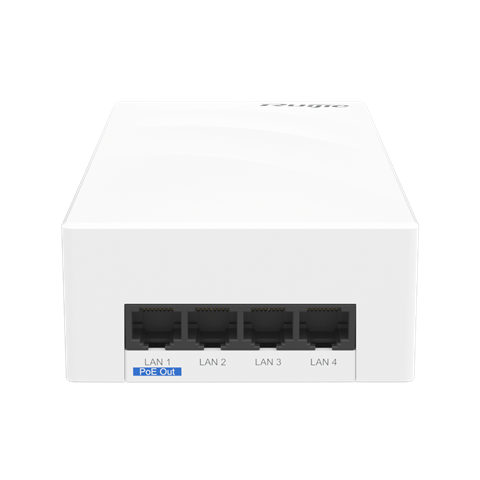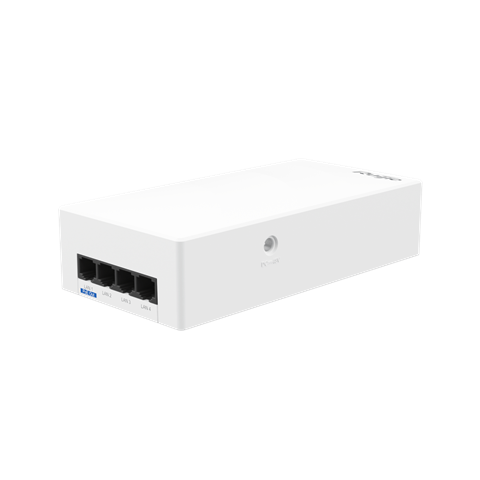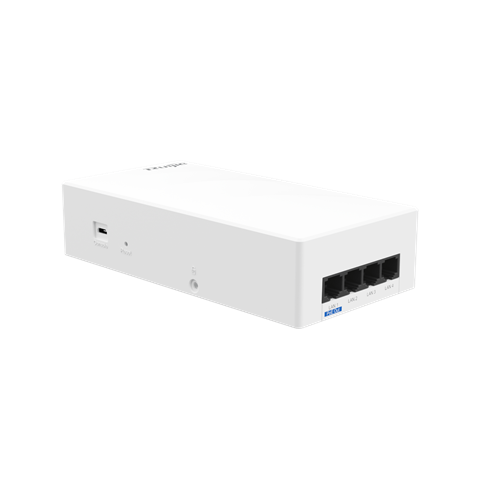| Wi-Fi Radio |
RG-AP180P-L |
| Radio design |
Dual-radio and up to four spatial streams: ● Radio 1: 2.4 GHz, two spatial streams, 2x2 MU-MIMO ● Radio 2: 5 GHz, two spatial streams, 2x2 MU-MIMO |
| Operating frequencies |
Radio 1, 802.11b/g/n/ax: ● 2.400 GHz to 2.4835 GHz (HE20/HE40), ISM, channels 1 to 13 Radio 2, 802.11a/n/ac/ax: ● 5.150 GHz to 5.250 GHz, U-NII-1, channels 36, 40, 44, and 48 ● 5.250 GHz to 5.350 GHz, U-NII-2A, channels 52, 56, 60, and 64 ● 5.470 GHz to 5.725 GHz, U-NII-2C, channels 100, 104, 108, 112, 116, 120, 124, 128, 132, 136, and 140 ● 5.725 GHz to 5.850 GHz (HE80), U-NII-3/ISM, channels 149, 153, 157, 161, and 165 Note: Available frequency bands may vary with countries or regions. To use the above-mentioned frequency bands, ensure that they are supported in your country or region. For details, see WLAN Country or Region Codes and Channel Compliance. |
| Data rates |
Combined peak data rate: 2.976 Gbps Radio 1: 2.4 GHz, 574 Mbps ● Two spatial stream Single User (SU) MIMO for up to 574 Mbps wireless data rate to individual 2SS HE40 802.11ax client devices (maximum) ● Two spatial stream Single User (SU) MIMO for up to 287 Mbps wireless data rate to individual 2SS HE20 802.11ax client devices (typical) Radio 2: 5 GHz, 2.402 Gbps ● Two spatial stream Single User (SU) MIMO for up to 2.402 Gbps wireless data rate to individual 2SS HE160 802.11ax client devices (maximum) ● Two spatial stream Single User (SU) MIMO for up to 1.201 Gbps wireless data rate to individual 2SS HE80 802.11ax client devices (typical) |
| Data rate set |
The following 802.11-compliant data rates in Mbps are supported: 2.4 GHz radio ● 802.11b: 1, 2, 5.5, 11 ● 802.11g: 1, 2, 5.5, 6, 9, 11, 12, 18, 24, 36, 48, 54 ● 802.11n: 6.5 to 300 (MCS0 to MCS15, HT20 to HT40) ● 802.11ax: 8.6 to 574 (MCS0 to MCS11, NSS = 1 to 2, HE20 to HE40) 5 GHz radio ● 802.11a: 6, 9, 12, 18, 24, 36, 48, 54 ● 802.11n: 6.5 to 300 (MCS0 to MCS15, HT20 to HT40) ● 802.11ac: 6.5 to 1,732 (MCS0 to MCS9, NSS = 1 to 2, VHT20 to VHT160) ● 802.11ax: 8.6 to 2,402 (MCS0 to MCS11, NSS = 1 to 2, HE20 to HE160) |
| Packet aggregation |
802.11n/ac/ax: A-MPDU and A-MSDU |
| Antenna type |
Built-in omnidirectional antennas (two 2.4 GHz antennas and two 5 GHz antennas) |
| Antenna gain |
2.4 GHz: 5 dBi 5 GHz: 5 dBi |
| Maximum transmit power |
2.4 GHz radio: 20 dBm (17 dBm per chain) 5 GHz radio: 20 dBm (17 dBm per chain) Note: The transmit power is limited by local regulatory requirements. For details, see WLAN Country or Region Codes and Channel Compliance. Thailand 2.400 GHz to 2.4835 GHz, EIRP ≤ 20 dBm 5.150 GHz to 5.350 GHz, EIRP ≤ 23 dBm 5.470 GHz to 5.725 GHz. EIRP ≤ 30 dBm 5.725 GHz to 5.825 GHz, EIRP ≤ 30 dBm |
| Power increment |
Configurable in increments of 1 dBm |
| Radio technologies |
802.11b: Direct-Sequence Spread-Spectrum (DSSS) 802.11a/g/n/ac: Orthogonal Frequency-Division Multiplexing (OFDM) 802.11ax: Orthogonal Frequency Division Multiple Access (OFDMA) |
| Modulation types |
802.11b: BPSK, QPSK, CCK 802.11a/g/n: BPSK, QPSK, 16-QAM, 64-QAM 802.11ac: BPSK, QPSK, 16-QAM, 64-QAM, 256-QAM 802.11ax: BPSK, QPSK, 16-QAM, 64-QAM, 256-QAM, 1024-QAM |
